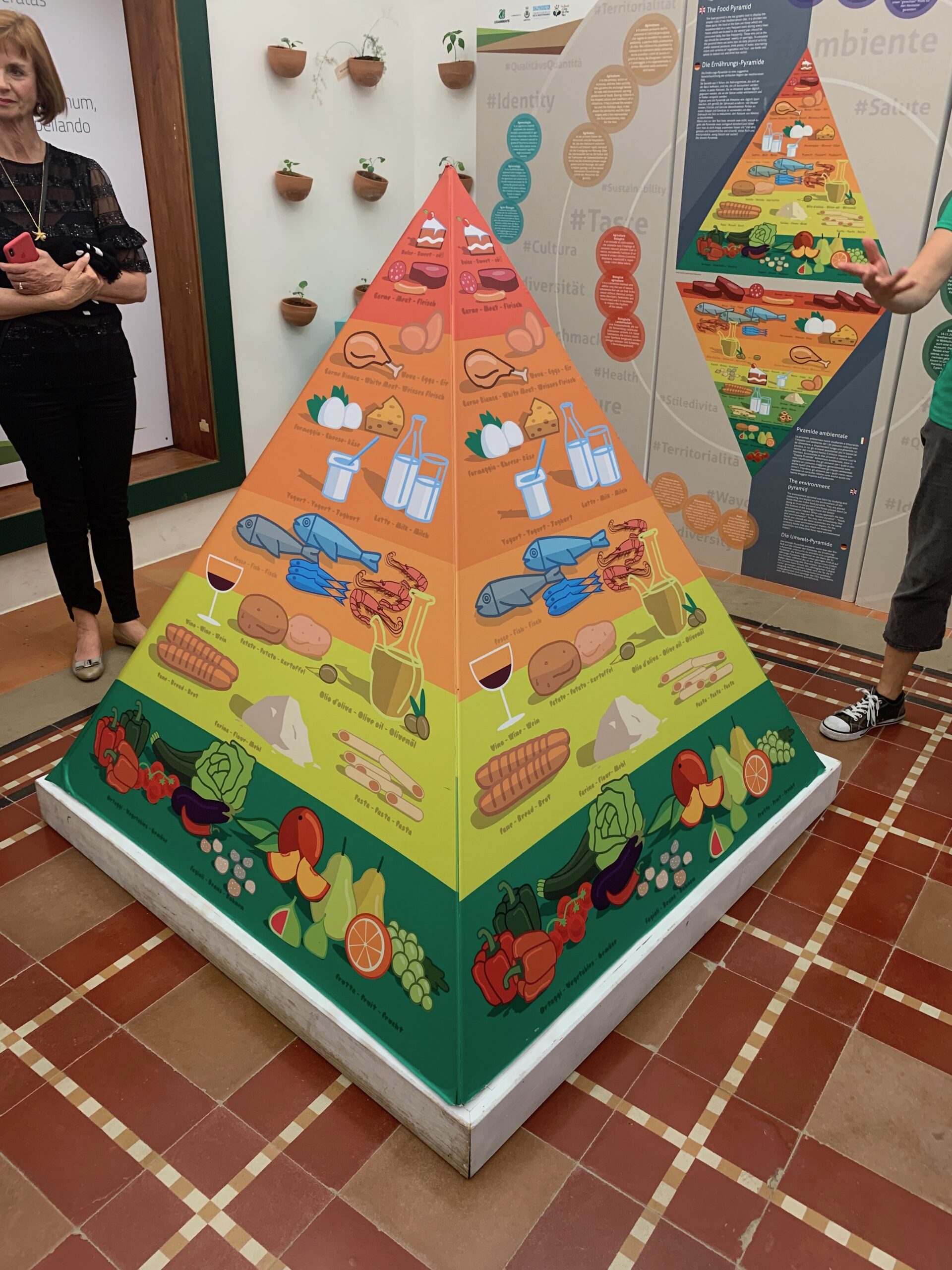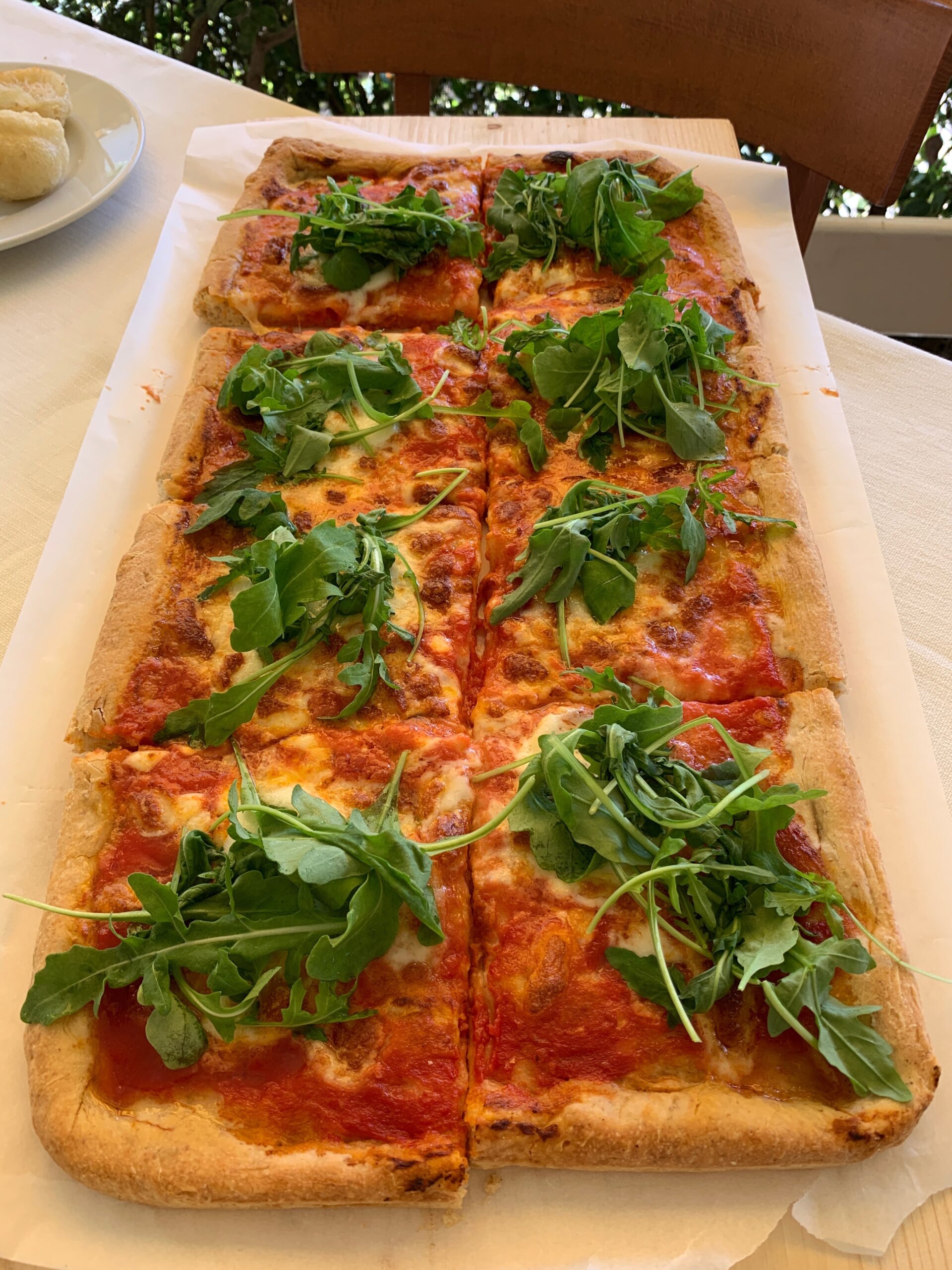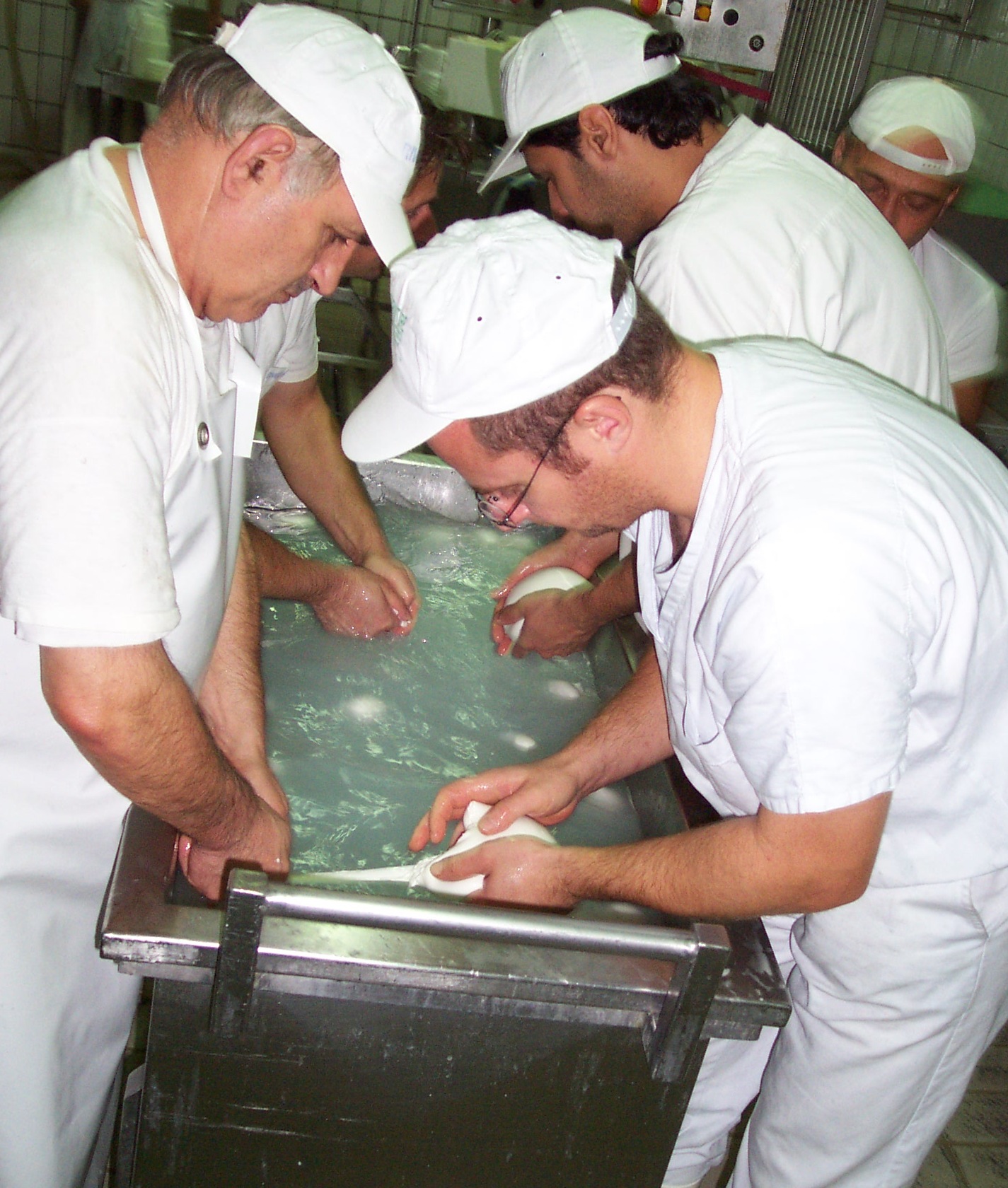Learn how to create your own Campania-inspired dinner at home!
Each and every region in Italy has incredible highlights-cultural, historical, and gastronomical. Campania is no exception.
There are many reasons to love Campania, the stunningly beautiful Italian region south of Rome, framed by the Tyrrhenian Sea to the west and Neapolitan Apennines to the east, and with the fortune to have Naples as its capital city. Other well-known landmarks include Mt. Vesuvius and the preserved Roman city of Pompeii, the ancient Greek city Paestum, the Amalfi Coast, and the island of Capri. However, some of the best reasons to love Campania are its iconic foods and dishes, and its link to the Mediterranean Diet.
The Mediterranean Diet. Campania is closely linked with the Mediterranean Diet, because it was the summer home of the “father of the Mediterranean Diet,” Ancel Keys. In the 1950s, Professor Ancel Keys (the famed epidemiologist and the inventor of the famous K Rations fed to American troops in World War II) began to study why Americans had distinctly higher rates of heart disease than Mediterraneans did. He and his wife and collaborator Margaret, and other colleagues, did their early field research in Campania, working from their summer house near the small village of Pioppi, on the coast south of Salerno in the Cilento region of Campania. This was the very beginning of what would be the popularization of the Mediterranean Diet, something Oldways has been a part of since creating the Mediterranean Diet Pyramid with the Harvard School of Public Health in 1993. If you visit Pioppi today, you will find the Mediterranean Diet Museum, celebrating the work of Ancel and Margaret Keys, and complete with a life size model of the Mediterranean Diet Pyramid.
Pizza. Naples is thought to be the birthplace of the pizza we know today. Its origin was flatbread, which had many variations all around the Mediterranean. Its evolution into pizza was in Naples during the 18th and 19th centuries, featuring foods that were locally produced (tomatoes, buffalo mozzarella, and wheat). There are still pizza makers in the crowded streets of Naples that date from these early days! Pizza arrived in the United States and North America with the arrival of Italian immigrants and the return of soldiers after World War II. Pizza is so important to Naples and Campania that there is an association dedicated to protecting the true pizza of Naples-the True Neapolitan Pizza Association– with very specific regulations about how the pizza must be made. One interesting story or legend about the origin of the classic pizza found on menus around the world, Pizza Magherita, is from Naples. According to Carol Helstosky, author of Pizza: A Global History:
Italy unified in 1861, and King Umberto I and Queen Margherita visited Naples in 1889. Legend has it that the traveling pair became bored with their steady diet of French haute cuisine and asked for an assortment of pizzas from the city’s Pizzeria Brandi, the successor to Da Pietro pizzeria, founded in 1760. The variety the queen enjoyed most was called pizza mozzarella, a pie topped with the soft white cheese, red tomatoes and green basil. (Perhaps it was no coincidence that her favorite pie featured the colors of the Italian flag.) From then on, the story goes, that particular topping combination was dubbed pizza Margherita.Buffalo Mozzarella. It’s not just any mozzarella on top of pizza in Campania (and Italy). One of the essential ingredients of a true Neapolitan pizza is Mozzarella di Bufala (Buffalo mozzarella). It’s essential in Caprese salad, too!
You can call Campania the land of buffalo mozzarella! To make the cheese, water buffaloes are milked twice a day (morning and evening). The milk from the evening is placed in a refrigerated cooler and then mixed with the fresh milk in the morning, the following day. To make the cheese, the milk is heated, and rennet is added when it reaches a certain temperature and turns into curds. The curds are then broken or cut. This is where the name Mozzarella comes from-mozzare in Italian is “to cut.” After being broken, the curds are left to acidify, and then placed in hot water.
This is where it gets interesting to watch. Two people are necessary to make artisanal Buffalo Mozzarella-one person pulls and the other shapes the mozzarella balls. There’s one more soaking, and then it’s ready to be enjoyed! It’s worthwhile to note that Mozzarella di Bufala Campana has received the Protected Designation of Origin-European Designation, and that there is a Consorzio (Consorzio di Tutela Mozzarella di Bufala Capana DOP) to protect and manage this designation. DOP means that each step of the production process take place in its region of origin. There are very strict regulations which must be met in order to assure quality.
San Marzano Tomatoes. San Marzano Tomatoes are another iconic product from Campania. Martha Stewart calls them the Ferrari or Prada of canned tomatoes. At this writing in September of 2020, we are enjoying the best of the best New England home grown tomatoes, but soon enough it will be winter, and we will be looking for the best canned tomatoes. Take it from Martha: you’ll love these tomatoes. San Marzano Tomatoes also have a DOP designation, which governs where they’re grown and how they’re processed. What makes these plum San Marzanos so special is the volcanic soil they’re grown in, as well as the microclimate of the area around Naples. There has been some suspicious labeling in the United States, so when you’re buying San Marzanos, look at the label for both the DOP and the Consorzio (yes, San Marzanos also have a Consorzio to protect the DOP) to make sure they are the real thing. Plus, like extra-virgin olive oil, if the price is too good to be true, it probably is!
Gragnano-City of Pasta. Pasta is consumed daily all over Italy, and each region has its special shapes and dishes. Campania has a City of Pasta-Gragnano! Gragnano is a hill town between Naples and the Amalfi Coast, and the pasta of Gragnano has also been designated a DOP product, and the Consorzio Gragnano Citta della Pasta defends the product. Once again, it is the microclimate of the region that makes it so suitable for producing pasta-the wind brings humidity and minerals from the sea into the city. Different brands of Gragnano pasta can be found in grocery stores or through online stores.
Lemons-of Amalfi and Sorrento. You might think of Sicily when you think of Italy and lemons; however, there are two very special lemons in Campania: Amalfi and Sorrento. Both are towns on the peninsula they share, each has a Consorzio to defend its lemon, and both lemons are protected IGP, which guarantees a product is grown or produced in a particular region or a country and that the quality, recipe, and characteristics can be traced back to its geographical origin. Both are fragrant, brightly colored, and offer high levels of Vitamin C. The Limone Costa d’amalfi is also called the “sfusato,’ and is more elongated. The Limone di Sorrento is more round in shape. Lemons are a big part of regional cooking-with seafood, on meat, in salads, and in desserts. Probably the most well-known use of lemons in Campania is the production of Limoncello, a sweet lemon liqueur.
As long as travel is safe, Oldways will be traveling to Naples and Amalfi in October 2022. We’ll be staying in Naples and Sorrento, as well as visiting the island of Capri and producers of Gragnano pasta, San Marzano tomatoes, Buffalo Mozzarella, local wines, and more. Chef Michael Lombardi of SRV Restaurant in Boston will be traveling with us and will lead us through pizza and seafood pasta cooking classes. We’d love to have you join us.
If you can’t wait until 2022, we will be publishing a new e-book, A Taste of Naples & Amalfi, with dinner party recipes featuring the products in this Fresh Friday, as well as dinnerware suggestions (a tip-the ceramics have lemons on them!).
A presto!
Want biweekly Med Diet information and recipes in your Inbox? Sign up for our Fresh Fridays newsletter by clicking the Subscribe button at the bottom of this page!
Join the Make Every Day Mediterranean Club Facebook group for additional information and support.










Leave a comment